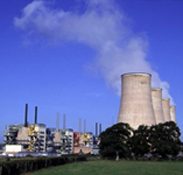Applicability of ASTM D6866 to Greenhouse Gas Emissions

ASTM D6866 makes a direct measurement of the carbon-neutral percentage within a bulk CO2/gas effluent. A single result is provided, e.g. 63% biomass CO2. A facility knowing its total tonnage CO2 output and ASTM D6866 result can directly calculate the tonnage of both carbon-neutral CO2 and fossil CO2 expelled, regardless of feedstock variability. ASTM D6866 provides a verification and monitoring tool for separating fossil carbon from carbon-neutral emissions in greenhouse gas emissions inventories.1
Give the Financial Community Confidence in Emission Reduction Projects
Relating percentages between projects, facilities, and projections is a common practice within the investment community. Being able to relate percentage reductions in fossil CO2 emissions by monitoring percentage carbon-neutral CO2 provides an understandable reference point to stimulate investment.
Avoid Double Counting
Single ASTM D6866 results can be tied to specific facility or industry emissions for trading and regulatory purposes. Since single measurements representing a true running average can be made directly on stack effluents over a time period of choice (1 week, 1 month, etc.), traceability is direct and double counting can be avoided.
Verifiable Emission Reductions
The combined knowledge of tonnage CO2 output and percentage biomass CO2 provides a simple, transparent measure to monitor reductions. For example, last period a facility produced 4,000 tons of CO2 with 50% biomass CO2, and this period it produced 4,000 tons with 75% biomass CO2. This facility has reduced its GHG emissions by 25%. Additionally, last period this facility had 2,000 tons of tradable carbon-neutral CO2 while this month it has 3,000 tons of tradable carbon-neutral CO2. If all facilities are operating under the same mechanism, a single, transparent and verifiable tool is at work.
1. Hämäläinen, K M; Jungner, H; Antson, O; Räsänen, J; Tormonen, K; Roine, J. Measurement of Biocarbon in Flue Gases Using 14C. RADIOCARBON, Vol 49, Nr 2, 2007, p 325–330.